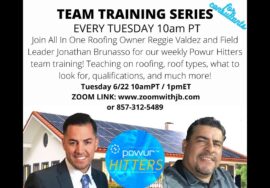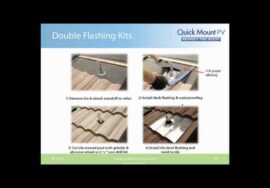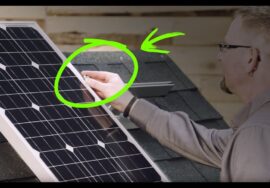Basic TPO Hand Welding Techniques | Roofing it Right with Dave & Wally by GAF
Dave & Wally provide an overview on the basics of how to hand weld TPO with a roller – the dos and don'ts of hand welding. The most important elements to remember? Speed, heat and pressure!
Roofing it Right with Dave & Wally by GAF chronicles the roofing lessons, tips and tricks taught by two experienced roofers. Watch more Dave & Wally at












Been with Centimark for about 4 months ive learned a lot. Just kinda felt the need to see what you guys have to offer. So far so good! thanks for this video i look forward to watching what you guys have on here and UP my game. I do have a question about the robot.. When we start running the seam the robot seems to be welding slower than the speed of the robot moving and it wants to wrinkle the 10 foot wide sheet.. Any ideas
Absolutely guys… and yeah they will show you what to do.. hard not to learn really its all trial by lister.. really its all up to foreman and how much you pay attention. Good luck ?
Yoo, Thinking to get into Centimark this year. They taught you?
Hi David. Our technical experts will be happy to answer any questions you have! You can reach them at 800-766-3411.
And I have been taught to keep the roller about an inch from the tip of the lister. Is this true?
This is a great video guys! Really informative. You really hit all the important points.
I’ll remember that: speed, heat and compression. Thanks!
Awesome. No-nonsense, straight-forward, clear-cut explanation of the specifics needed to learn to do this oneself the right way. Much appreciated, guys.
We’re glad to hear it. Thanks for watching!
I’m waiting to get my working permit and then I will apply for CentiMark, A commercial roofing company. Experience is not required because they teach to apprentices. This videos are helping me because I hope to get this job for long term
Centimark is a good company you can make a good living good luck
If the weld is stronger than the sheet itself, why can you pull it apart? Good luck trying to tear a sheet of TPO in half with your bare hands.
The comment on the weld being stronger than the sheet itself is in reference to when Dave and Wally perform their weld tests. As you can see, the cap sheet of the TPO tears off and stays attached to the membrane it was welded to.
How, thanks for uploading. What Leister model do you suggest for TPO?
Most work fine. The S was way better than the ST model, and more reliable, with less air flow issues. While you can buy parts, it’s been discontinued
Smooth vid
What happens if your hand weld is greater than 1.5″? Isn’t more better?
No, its not better. The standard hand welder nozzle is 1.5″ or 40mm wide. The thing is, when welding the lap, youll have the welders nozzle at a 45 degree angle, not perpendicular to the lap, so you lose a tiny bit of that 1.5″. On top of that, you gotta leave an 8th to a 1/4 inch of the nozzle out of the lap to make sure it welds. These people have it dialed in. You dont have to reinvent the wheel.
@bobcougar77 Hi Bob. In general, the inch to inch and a half spec is more about robot welding. When you’re welding with the robot, if you find your welds are going 2″, you might be welding too hot, so you should look for that inch to inch and a half weld. In terms of hand-welding, you’ll notice that Dave and Wally in some of their videos will weld the entire accessory down, rather than sticking to the inch and a half on the hand weld, so its less critical in this case. It’s more or less a rule of thumb that you should be looking to get at least an inch width in your welds.
@GAF Roofing Thanks for the reply but we asked a “why” question and your sending us to a place where were not going to get a “why” answer. It’s just going to say the same thing you just said.
Hi. The hand weld must be a min of 1″ and a max of 1.5″. If you’d like more information, please send us a message on Facebook or Twitter and will share the EverGuard Mechanically Attached Manual with you.
That is my question too. I thought he mispoke at first but then he repeated it later in the video.
M
what are the guys that disliked the video even here. Great video!!!